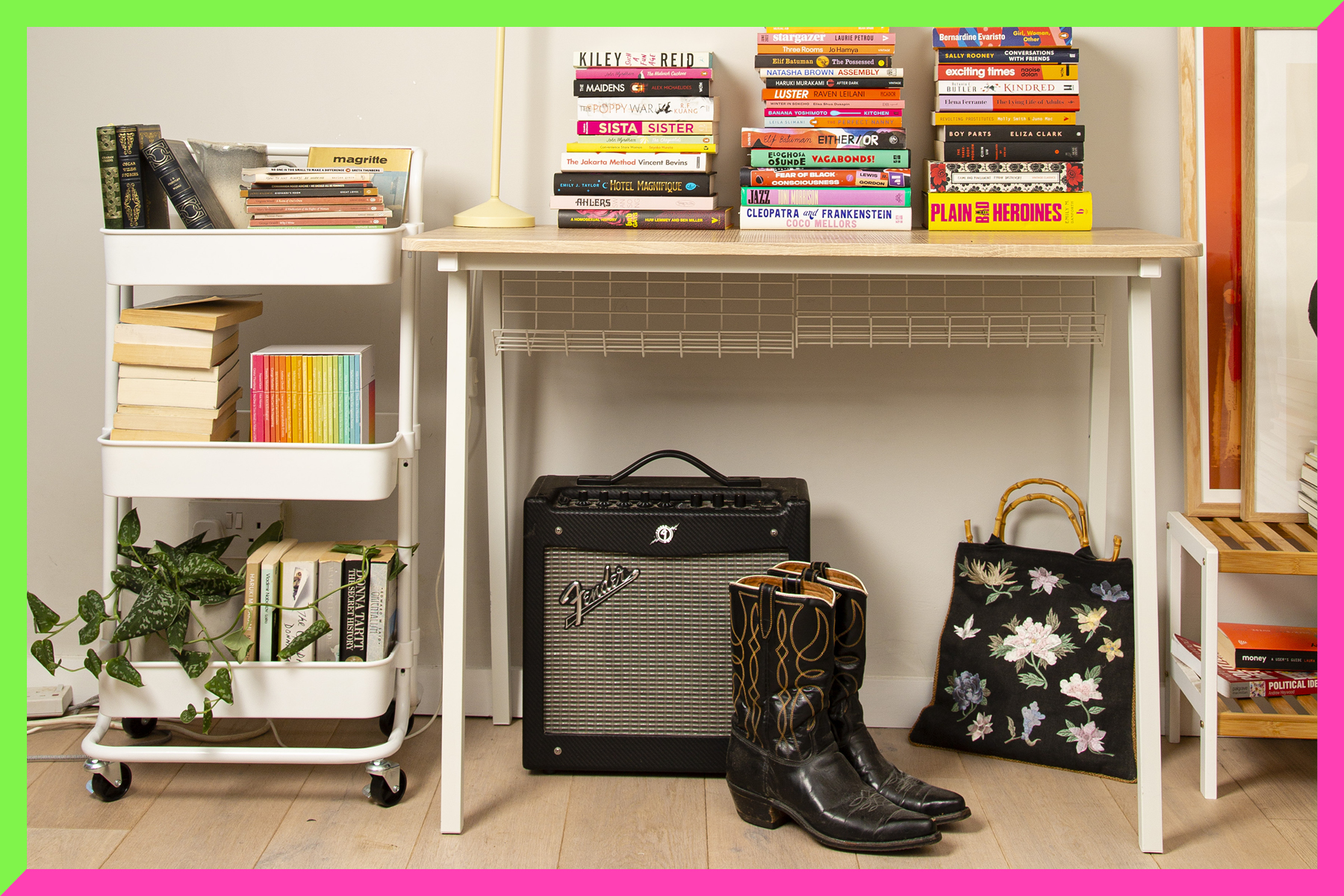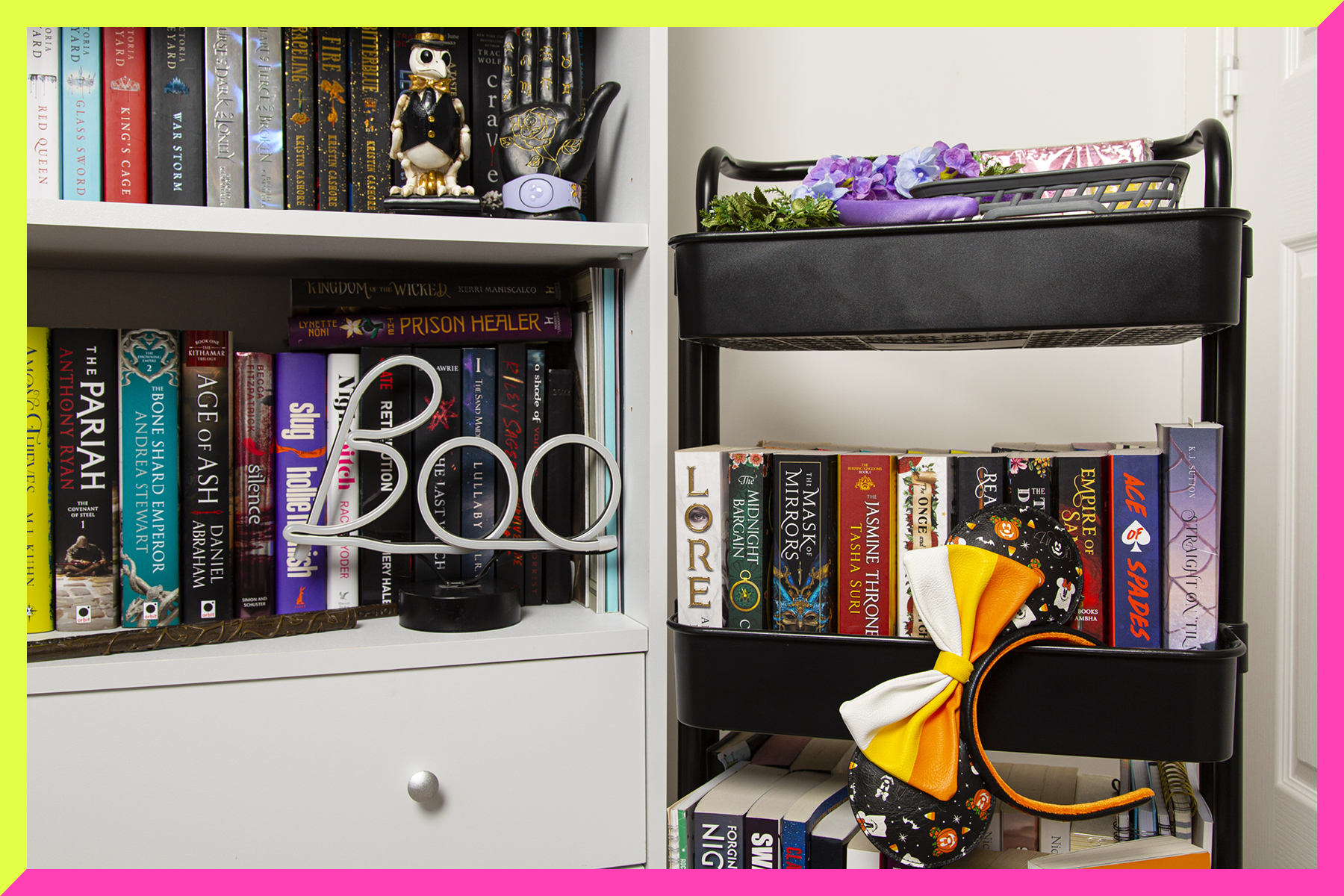
- Home |
- Search Results |
- How an Ikea storage solution became Gen Z’s most coveted bookshelf
The interplanetary gurgle of Eliza Rose & Interplanetary Criminal’s dance track B.O.T.A pounds as a bespectacled 20-something dances behind a box. “Set up my Ikea raskog with me”, the video invites. Over the next 16 seconds, the metal parts of a flat-pack trolley are laid out on a bed, screwed together and filled with “bits and bobs”: a candle, a wash bag and a clutch of paperbacks. The whole thing is lit softly by fairy lights and perched next to a standard-issue college dorm desk. “in lurvvvv!” reads the video’s caption.
This is one of dozens of similar videos across Instagram and TikTok, in which Gen Z bookworms construct, stack and organise what have come to be known as “TBR Carts” or “TBR Trolleys” – TBR, or To Be Read, becoming the unofficial title of a nifty little storage solution that the Swedish homeware giant released in 2012.
A little over a foot wide and standing at the height of the average toddler, the Ikea Råskog trolley has been helpfully trundling through our homes in various guises over the past decade. Interiors blogs started to spot the various uses for the Råskog in the mid-2010s – as bedside trolleys holding hand cream and magazines, as bar carts filled with cocktail shakers and spirits, and piled neatly with towels and toiletries in the bathroom.
"It was inspired by typical industrial trolleys, like the ones you used to find in factories,” designer Nike Karlsson said in 2012. “There’s something about the rustic qualities and the honesty of these objects that I like, and that creates a sense of nostalgic yearning. I also like the fact that they’re very functional, almost like a tool in their own right.”
In many ways, the Råskog has carried the different interiors micro-trends over the past decade: when tiny succulents, houseplant collections and small space gardening exploded in the late 2010s, the Råskog trolley turned up to house them all in pleasingly millennial shades of teal, pink and blue. In 2017, Melissa Berger, the American homemaker behind YouTube channel All Things Pretty posted a 16-minute-long video comparing the Råskog with a similar model, the Lexington, made by US store Michaels. It’s since had 91,000 views. Her verdict? “It really, overall, doesn’t make a difference”.
Berger was assessing the carts from a crafting perspective, but the bookworm community was clocking on to the surprising capacity of these little carts and sharing their finds on YouTube and, increasingly, Instagram. Spotting them pop up in her feed, early adopter Sally Lau invested in the now-discontinued teal Råskog trolley in 2018, shortly after she set up her books-dedicated Instagram account.
“It’s a rare find these days,” the 32-year-old merchandiser and creator of Instagram account What Sally Read Next says. “I got it because I was running out of bookshelf space and thought it would be a great way to store my books without too much of a price tag.”
The tenets that underpin much of Ikea’s design approach are what made Råskog and its imitators so appealing to younger bookworms, in particular. Kerrie Hunt, who is 32 and based in Nottingham, bought hers after spying the trolleys on TikTok during the first lockdown of 2020. “I thought it was such an affordable and cute way to start and organise a book collection,” she says.
What’s interesting, though, is the how the trolley has transformed from simply being extra shelving space to being specifically for unread books – or ones patiently waiting on the TBR pile. Hunt is the BookTokker behind BookedUp, and says that the trolley helped her to sort her reading in the midst of a house move. “I have noticed that the book community tend to enjoy keeping organised with things like TBRs and reading trackers, so having a specific place to physically see the books on your TBR is another way of organisation,” she says. “Personally, I have over 280 books on my physical TBR so having a smaller collection on my cart helps me focus.”

Lau is in similar situation – she uses her cart as a way of siphoning off desired reads from a far larger untapped collection. “It helps it to seem less overwhelming,” she says, “and I use the top shelf to hold the books from my TBR for the month.”
This, explains Hali Brown, is no mere coincidence. “About a year ago on BookTok and BookTube, it seemed like there was a lot of book-buying and not enough book reading happening,” the 27-year-old from London explains. Brown, who runs TikTok account booksonthebedside with her sister Hana, bought her cart early last year, and “loved the idea of separating them out from the rest and giving myself a bit of a challenge.” It’s led to an unexpectedly meaningful way of reading: “I am much better at being more sustainable in my book buying and have checked a lot of reads off my TBR.”
It helps that the trolleys make for good content, too – not only does the trolley’s design continue to sit with contemporary interiors trends (although the pastel shades have given way to monochrome ones, with one yellow option), but the gentle satisfaction of reorganising a TBR cart is a regular staple of BookTok’s offering.
“You can do TBR trolley updates and re-jigs and it’s still entertaining for online audiences and for creators themselves," explains Brown. "I don’t think the trolley is for everyone and I still think I love messily stacked books more, but it’s a very cute and practical way of displaying your interests."
Plus, she says, Råskog rolls with the times. "The trolley acts as an ever-changing display of what the reader is interested in.”